Apple iMac (2017)
In 1998, shortly after Steve Jobs made his way back into the company, reprising his role as CEO, Apple released the iMac G3. Controversially known for abandoning technological conventions at the time, it would take years for us to realize that behind its transparent ‘Bondi Blue’ shell was a glimpse of the future.
Thus, the iMac of today is a very different beast in some ways, yet strikingly similar in others, compared to that of yesterday’s iMac. Today, it has a much higher resolution, 4K (4,096 x 2,304 pixels to be exact) wide-gamut display that makes colors pop as realistically as they would in a showing of Blade Runner 2049 at the cinema.
The iMac is also a lot slimmer these days than it was 20 years ago, despite exhibiting performance that’s impressive even for the 21st century. Perhaps most entertaining to us, however, is the price, an area which – contrary to popular belief – Apple remains increasingly competitive in, at least when it comes to all-in-one desktop computers.
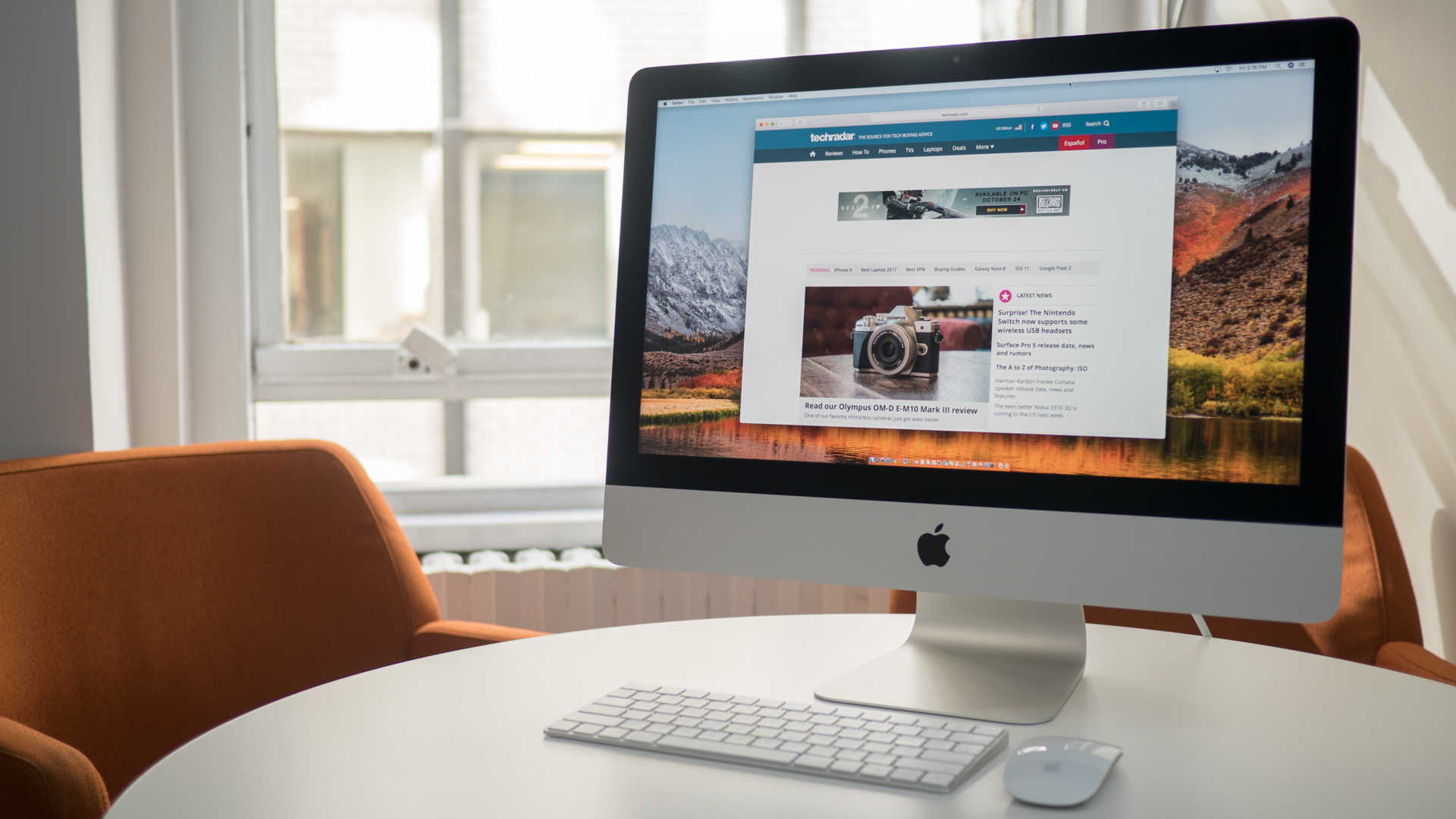
Price and availability
For a mere $1,099 (£1,049, AU$1,599), you can buy an iMac that includes both a Magic Mouse 2 and Magic Keyboard in the box. That’s a $178 (£178, AU$248) value for the accessories alone.
Of course, for that price you’re getting a 21.5-inch Full HD (1,920 x 1,080) display model with an Intel Iris Plus Graphics 640 graphics chip integrated into the 7th-generation, dual-core 2.3GHz Intel Core i5 processor, but it’s a commendable value all the same.
As you can judge by the spec sheet, the unit we were sent for review is a step up from the entry-level model in every regard, save for the hard drive, and for only another 200 bucks at $1,299 (£1,249, AU$1,899).
From there, you can configure the iMac with just about every component better than the last. Need discrete graphics to live out your creative aspirations? You can get a 21-inch iMac with up to AMD Radeon Pro 560 graphics. Or, if 32GB of RAM suits your fancy, you can demand that Apple install that too.
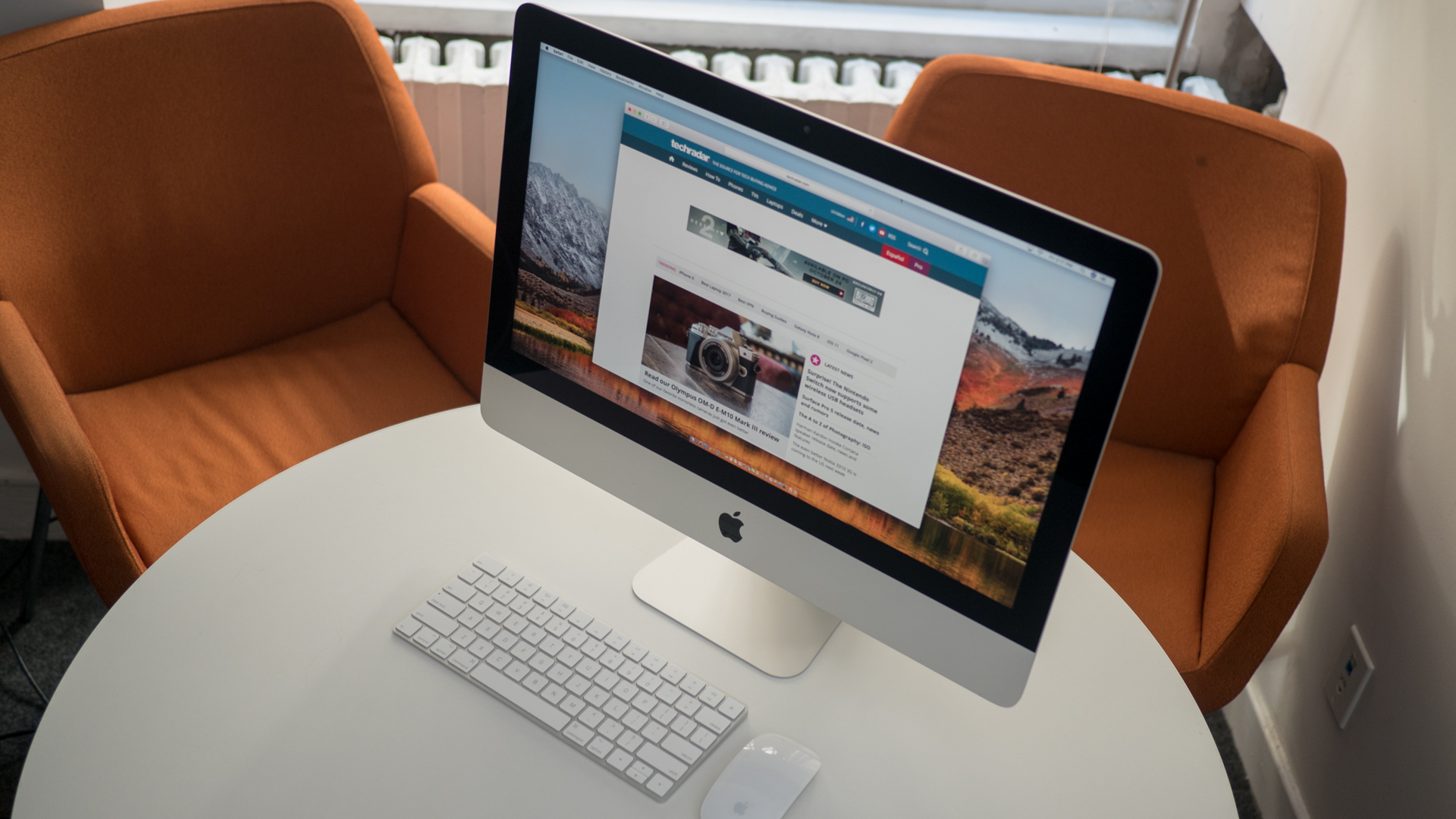
If that’s not enough, we’ll have to recommend that you take a look at the recently launched iMac Pro. Starting at $4,999 (£4,899, AU$7,299), it’s an extravagant proposition for the average home, but for power users, the prospect of up to 18 cores of raw processing power is enticing to say the least.
These prices are mostly in line with other premium all-in-one PCs out there, namely the iMac’s newest high-end rival in the $2,999 (£2,999, AU$4,699) Surface Studio. Naturally, you’ll find plenty of options cheaper than this, but chances are they won’t house as powerful components or come with accessories this high in quality.
You can pick up any of the 2017 iMac models now directly through Apple’s website or other online retailers, like Amazon.
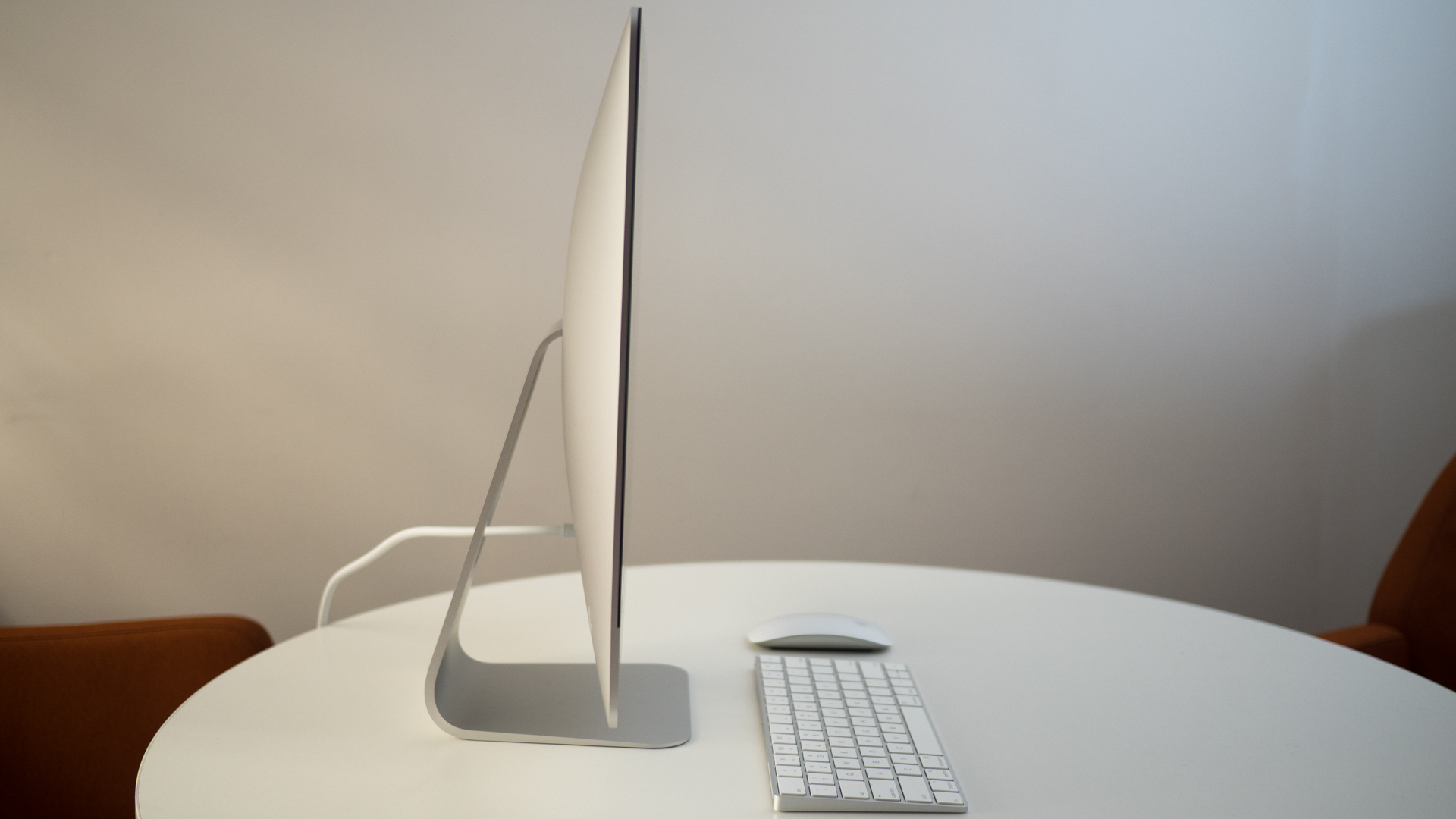
Design
Not much, if anything, has changed about the iMac’s look and feel these past few years. That’s not necessarily a bad thing, as this brushed aluminum all-in-one is simply sublime to behold. However, a few persisting design choices – not to mention its overall design in the face of new rivals – give us a bit of pause.
That said, there’s something still wholly iconic about the iMac silhouette that’s made it a staple of offices, home and otherwise, in movies and TV for years. Its simple yet elegant appearance manages to be both striking and avoid getting in the way while you’re working.
Then, of course, there’s the seemingly impossible thinness of the device, considering exactly how much is packed into the display portion of the computer (i.e. literally everything).
However, with Microsoft’s Surface Studio now on the block, it’s tough to ignore just how much thinner and more impressive the iMac could be if Apple just leveraged its learnings from developing Mac mini computers toward crafting a different kind of iMac base. You know, one that holds all of the computer’s guts and ports?
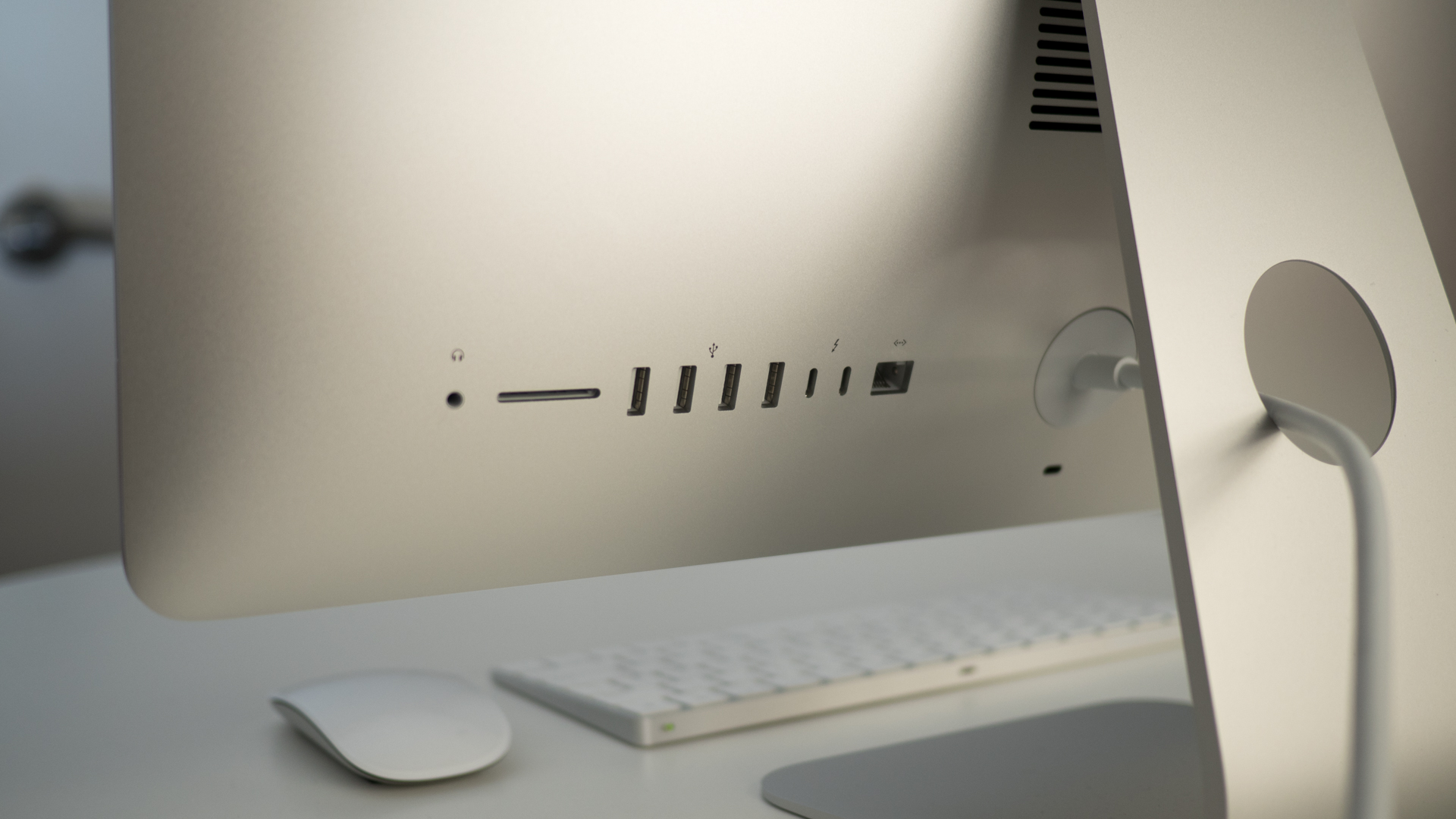
Looking at the Surface Studio in the TechRadar office and then back at the latest iMac, it’s frankly baffling that Apple didn't beat Microsoft to that punch years ago.
Despite this, Apple managed to cram all the ports you could ever want or need from an all-in-one computer into the back of this iMac, so kudos.
Further to the point, Apple’s pursuit of absolute thinness despite cramming all of the iMac’s innards behind the display has only led to suffering audio. A total of two stereo speakers rest within both sides of the iMac’s bottom-most edge and, while they deliver impressive volume, as a result the narrow chambers deliver highs and mids no better than your average Ultrabook can.
That’s not cool for a device that takes up as much space as an all-in-one does – no matter how impossibly thin it is.
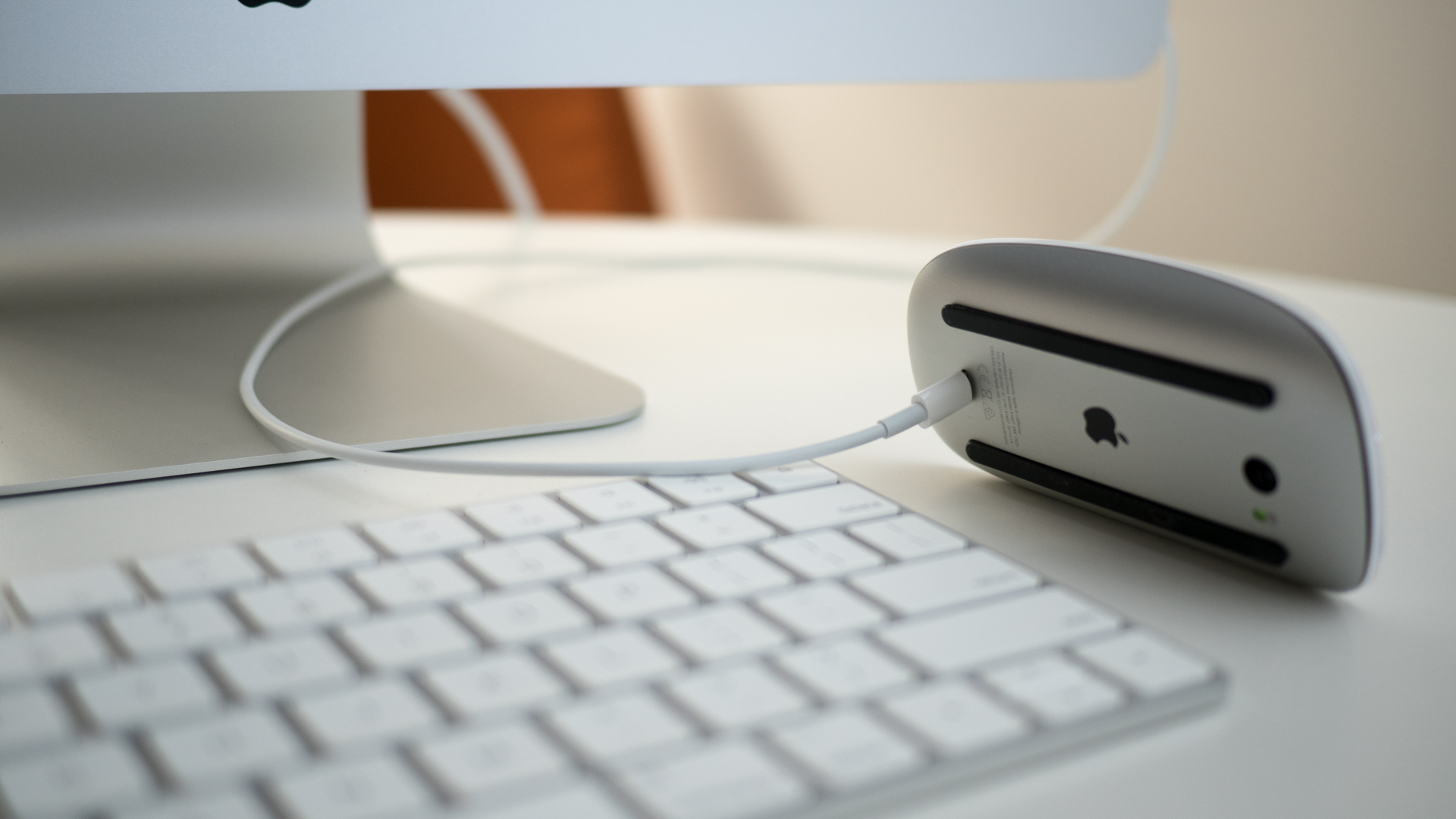
Finally, that Magic Mouse 2 simply needs a revamp. It tracks and clicks amazingly, which is wholly unsurprising for the company that inspired everyone else to up their input game years ago. However, the fact that you can’t charge this mouse while using it, because of where the Lightning charging port is located, is simply bananas.
Luckily, the included keyboard is just a delight to type on, and the days-long battery life of both input devices are a major plus – considering that you have no other choice but to buy older wired models, if wireless isn’t your thing.
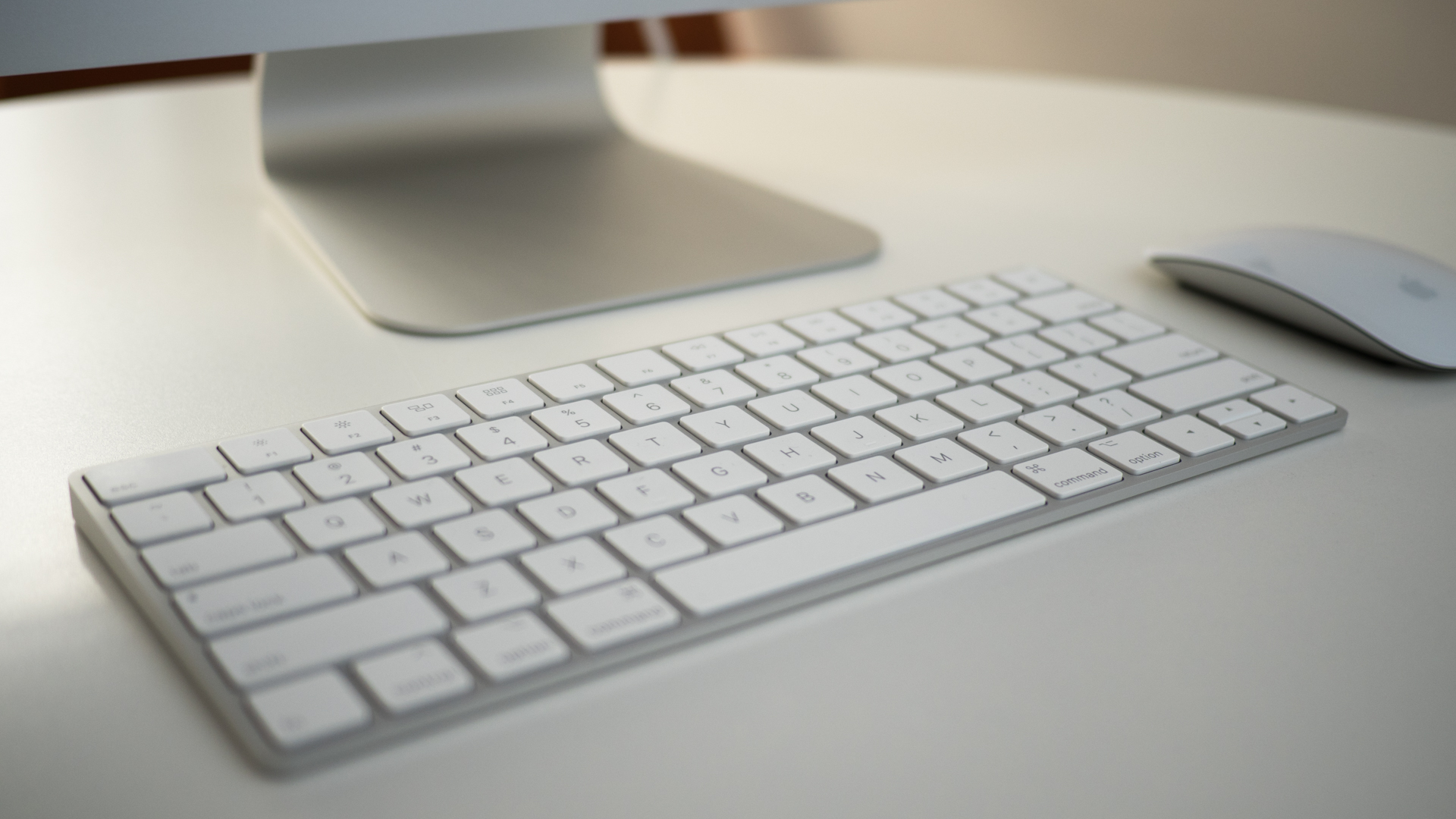
Performance
Since Apple’s macOS isn’t compatible with the majority of normal benchmarks that we run at TechRadar, it’s difficult to compare the iMac against the Windows 10-based all-in-one PCs we’ve reviewed in a comprehensive way.
That said, it’s clear in the tests that this iMac benefits quite a bit from its 7th-generation (Kaby Lake) Intel Core i5 processor over the Surface Studio’s quickly-aging, 6th-generation chip.
To wit, the iMac showed far stronger single-core performance over the Surface Studio as well as moderately better multi-core power in the Geekbench 4 benchmark. However, the fact that Microsoft’s all-in-one offers up twice as much graphics VRAM as the iMac shows in the numbers, with the former’s Cinebench results 20 frames per second (fps) faster than the latter’s, despite its older chip.
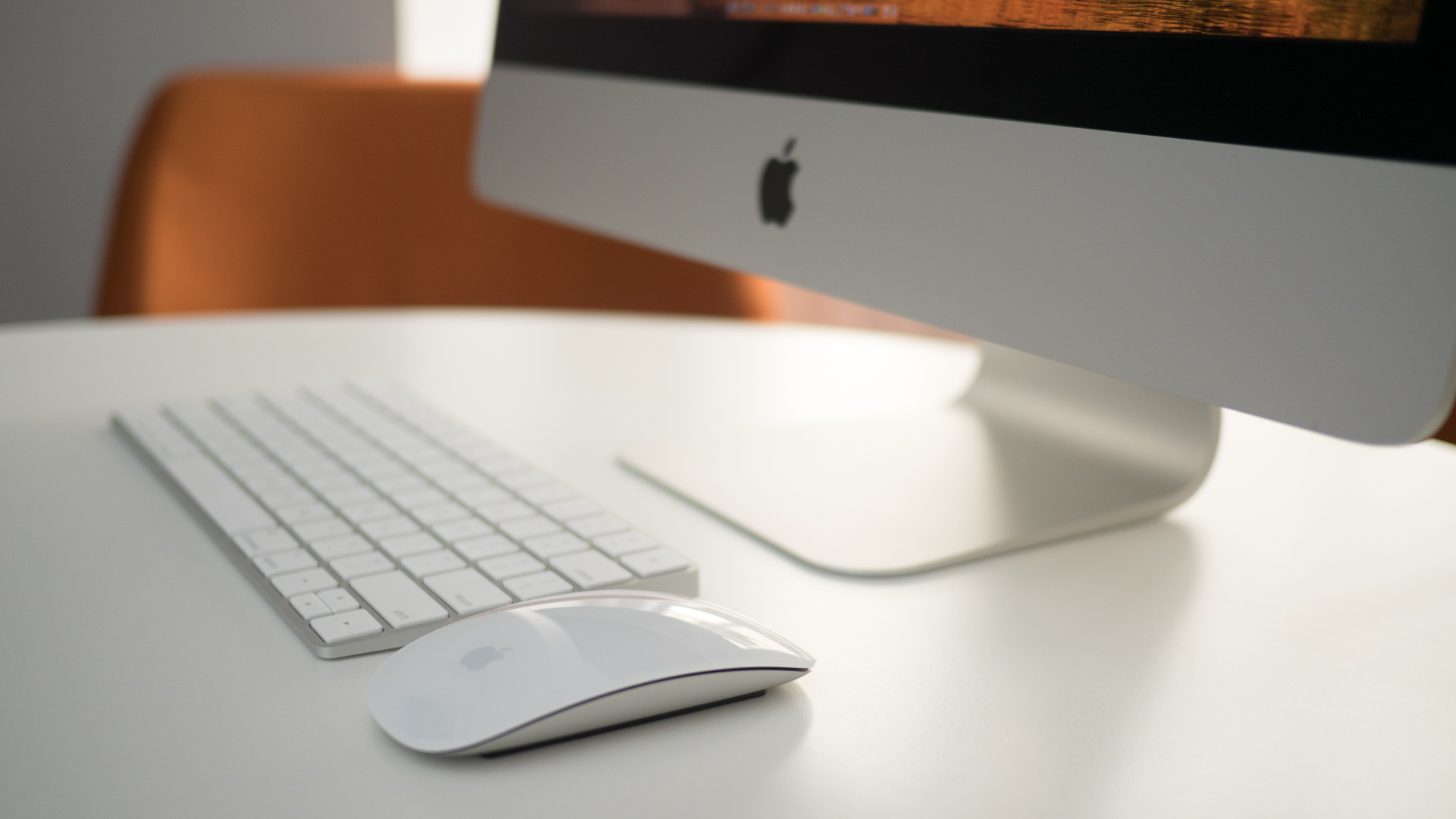
At any rate, we find the latest iMac to be a strong performer regardless. It handles our normal workloads of dozens of Google Chrome tabs and the Slack chat client – both RAM and processor-hungry apps – with ease, and could likely take on a bit more. While we did bear witness to the spinning beachball more times than we’d like from a newly-opened Mac, it didn’t appear frequently enough to the point of it outright being a detraction. (No matter how new your computer is, it’s not immune to the spinning wheel regardless of color or shape.)
Our biggest takeaway from using the latest iMac is its simply stunning display. Seriously, if you can swing it, spring for the mid-range 21.5-inch model, because that 4x jump in pixel density – and the better graphics tech behind it – is well worth it.
Photos look incredible on the panel and are expertly colored, thanks to its P3 color gamut. That’s an important point, because that improved color reproduction affects all ends of the system regardless of the resolution of the content you’re viewing. Even videos at 1080p look markedly better because of P3. Sadly, this has made going back to our normal 1080p screens with RGB color a sobering experience.
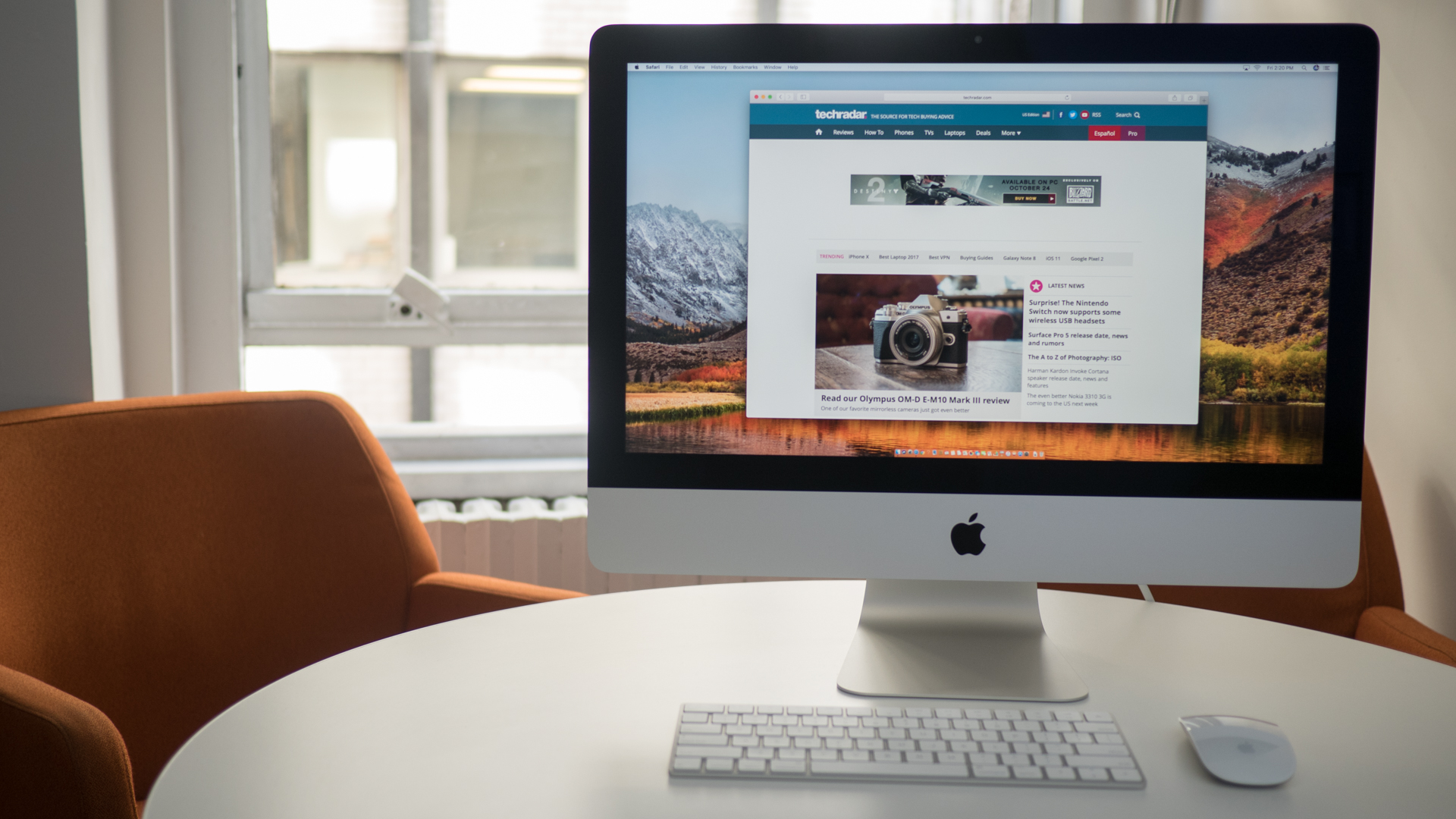
Final verdict
All in all, the 2017 iMac is a fine update to Apple’s all-in-one computing platform. For the money, at least for the 21.5-inch model, you’re getting a beautiful machine that’s more than capable of handling every task you throw at it – from web browsing to photo editing.
That said, nothing exists (for long) in a vacuum. We can’t ignore that the iMac seems to have fallen behind the trends of modern all-in-one computers, namely those spearheaded by Microsoft’s Surface Studio. Plus, we’re not fans of the audio performance and, while the Magic Mouse 2 is a wonderful mouse to use, the fact that it can’t be used while charging is an oversight.
At any rate, those seeking a 4K-ready – or even a 1080p – all-in-one that’s as powerful as it is stylish will find what they’re looking for in the 2017 iMac. Despite a few bugbears and an arguably dated design, the average Mac fan (or would-be fan) will find plenty to love about yet another iconic Apple computer.
0 comments:
Post a Comment